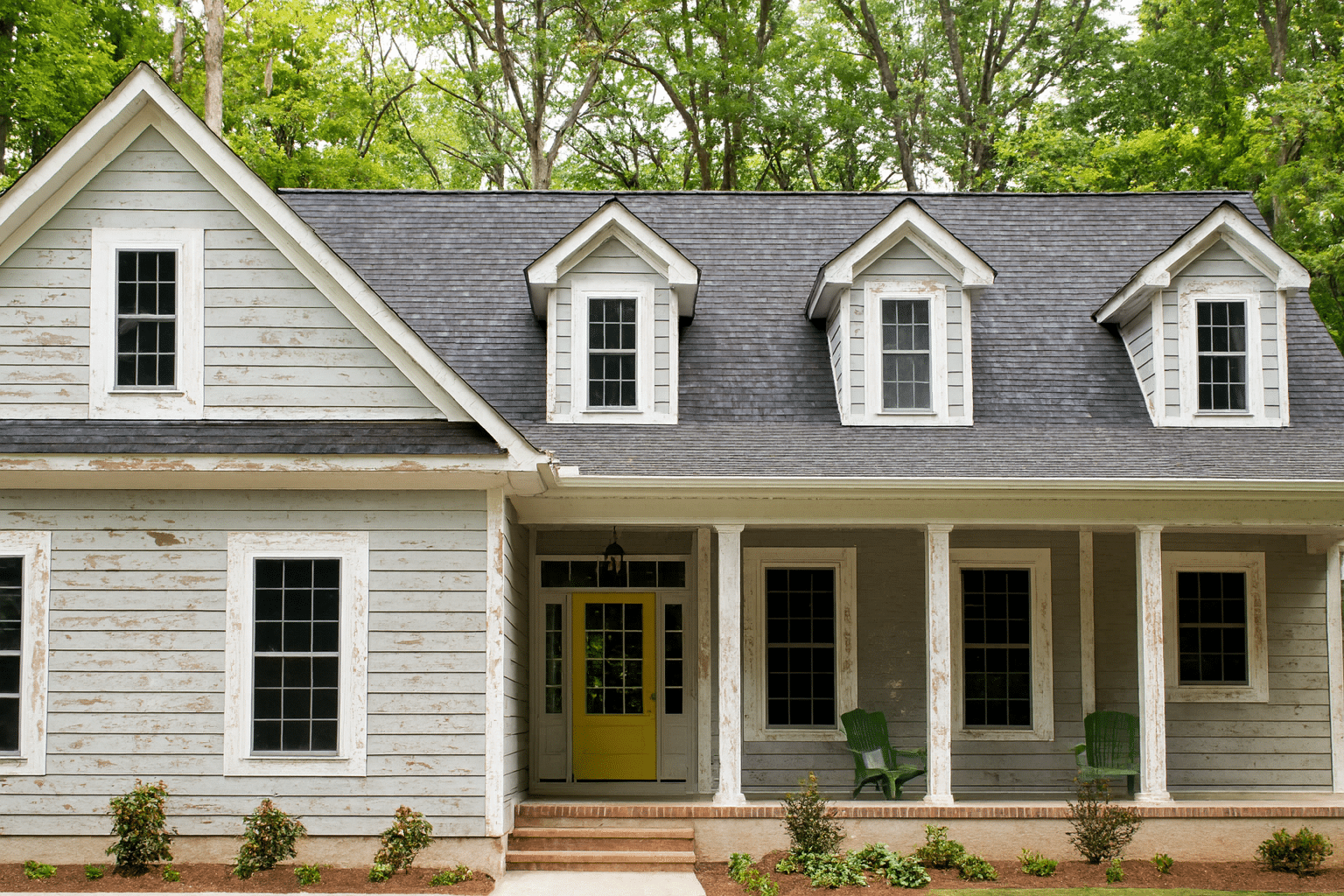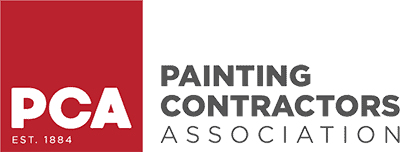Chipped paint can show up anywhere in your home — on interior walls, ceilings, bathroom trim, or the exterior siding and shutters that face Palm Beach’s coastal heat and humidity.
These spots may look small at first, but over time they spread, leaving your home looking worn and exposing wood, drywall, or stucco to further damage. That’s why knowing how to repair chipped paint is important for keeping your home in Palm Beach, FL looking clean and protected year-round.
Professional painters handle chipped paint on both the inside and outside of homes daily. Whether the cause is water near a bathroom window, salt air working against exterior siding, or just paint that’s aged, the repair process follows a proven system: scrape, fill, sand, prime, and repaint.
Key Takeaways:
- Chipped paint happens from heat, humidity, leaks, and age.
- Interior chips often appear on bathroom walls, trim, and kitchen areas.
- Exterior chipped paint exposes siding, wood, or stucco to water damage.
- Repairs include scraping, filling with spackling paste or wood putty, sanding, priming, and repainting.

What Causes Chipped Paint Indoors and Out
Inside the home, chipped paint often shows up on walls, kitchen trim, or bathroom ceilings where there’s constant heat and moisture. Steam, cleaning products, and even small leaks can break down the adhesion.
Outside the home, the Florida climate is tough on painted surfaces. Direct sun, heavy rain, humidity, and salt air eat away at finishes. On siding, fascia boards, and shutters, paint begins to bubble, peel, and chip when the surface isn’t properly primed or when older coats break down.
Here are some common reasons paint chips on both interiors and exteriors:
- Moisture and leaks in bathrooms, kitchens, and exterior walls exposed to storms.
- Heat and humidity that expand and contract surfaces, especially wood.
- Lead paint in older Palm Beach houses that breaks down into chips and dust.
- Rust on metal surfaces when primer wasn’t applied.
- Age and wear from years of sun, rain, and daily use.
Why Fixing Exterior Chipped Paint Matters
Leaving exterior paint chipped is more than a cosmetic issue. Once bare wood, stucco, or concrete is exposed, water seeps in. That can lead to rot, mildew, and costly structural repairs.
Professional painters in Palm Beach, FL often see homes where a small paint chip turned into wood damage on siding or a water stain spreading across stucco. Repairing chipped paint on exterior surfaces protects against these bigger problems and keeps curb appeal strong. Our blog on signs to repaint your house exterior shows exactly when it’s time to act.
Safety Concerns: Lead Paint Indoors and Out
Homes built before 1978 in Palm Beach may have lead paint on both interior walls and exterior siding. Sanding or scraping it creates dangerous dust. Professional painters are trained to test for lead, contain the dust, and repair chipped areas safely. This step matters for both health and compliance with regulations.
Tools and Materials Used by Professional Painters
Whether repairing chipped paint indoors or outdoors, the same tools and materials apply, with a few additions for exterior work:
- Scraper or razor scraper
- Wire brush for rust and old paint
- Sandpaper or sanding sponge
- Putty knife
- Spackling paste or joint compound for walls and drywall
- Wood putty or exterior filler for siding and trim
- Exterior-grade primer (oil or latex)
- Paintbrush, microfiber roller, or spray paint gun
- Masking tape and plastic sheeting
- Waterproofing products for exposed exterior areas
- Enamel paint or latex paint depending on the surface
This combination allows professional painters in Palm Beach, FL to handle everything from a chipped bathroom ceiling to peeling exterior shutters.
How to Repair Chipped Paint?
Here’s how chipped paint repairs typically happen in Palm Beach homes:
Step 1. Scraping and Cleaning
Loose paint is removed with scrapers and wire brushes until only solid, adhered paint remains. On exteriors, pressure washing may be used to clear dirt and dust before sanding.
Step 2. Filling and Patching
For walls and drywall, spackling paste or joint compound is applied. For wood siding, trim, or window frames, wood putty or exterior filler is used. On metal surfaces, rust is treated before applying filler.
Step 3. Sanding for Smoothness
Once dry, the patch is sanded with fine-grit sandpaper. This step is critical for exterior work, where uneven spots show up clearly in sunlight. Dust is removed with a microfiber cloth or pressure air.
Step 4. Priming
Primer locks in the repair and helps paint adhere. Exterior repairs often require extra coats of primer to stand up against Palm Beach’s heat and moisture. See our breakdown of coats of primer for more on why this step matters.
Step 5. Painting
Once primed, professionals apply latex or enamel paint with brushes, rollers, or sprayers. For exterior painting projects, waterproofing paint or extra protective coatings may be used to extend the life of the finish.
Interior vs. Exterior: Different Challenges
- Interiors deal with humidity from kitchens, bathrooms, and laundry rooms. Adhesives, oils, and even cleaning products can break down paint.
- Exteriors deal with Florida’s sun, heat, rain, and salt air. Surfaces expand, contract, and take on constant wear.
Professional painters in Palm Beach, FL adapt their tools and products depending on whether they’re working on drywall inside or siding outside.
Common Mistakes That Keep Paint Chipping
Many Palm Beach homeowners are surprised when chips keep coming back. That usually happens because:
- Surfaces weren’t cleaned of rust, dust, or old adhesive.
- Wrong filler (spackling paste used on exterior siding instead of wood putty).
- Skipped primer before applying paint.
- Latex paint used outdoors where enamel or exterior-grade paint was needed.
- Working in high heat without letting coats dry properly.
We’ve shared more on why surface prep matters in our blog on painting mistakes, where skipping steps creates ongoing problems.
Final Thoughts on Protecting Your Palm Beach Home
Whether indoors or out, chipped paint is more than cosmetic. Knowing how to repair chipped paint protects your home from water damage, rust, dust, and weather exposure. In Palm Beach, FL, where humidity and heat wear down surfaces fast, working with professional painters ensures every wall, ceiling, siding board, and shutter gets the care it needs.
If you’re ready to restore your Palm Beach home inside and out, call Home Perspective Painting & Staining today. We proudly serve Palm Beach, Jensen Beach, Hobe Sound, Jupiter, FL, and the surrounding areas.
Reach us at 772-261-9133 for a FREE estimate and let professional painters in Palm Beach, FL give your home the finish it deserves.
FAQs
How to repair chipped paint on exterior siding?
Scrape away loose paint, fill with exterior putty or filler, sand smooth, apply exterior primer, and repaint with a protective coating.
How to repair chipped paint on walls?
Scrape, patch with spackling paste, sand, prime, and repaint with latex for a seamless finish.
How do you fix peeling paint?
Peeling areas are scraped until solid paint remains. The area is filled, primed, and repainted.
What about chipped paint on windows and trim?
Wood putty or filler is applied, then sanded and primed before enamel or oil-based paint is applied for durability.

